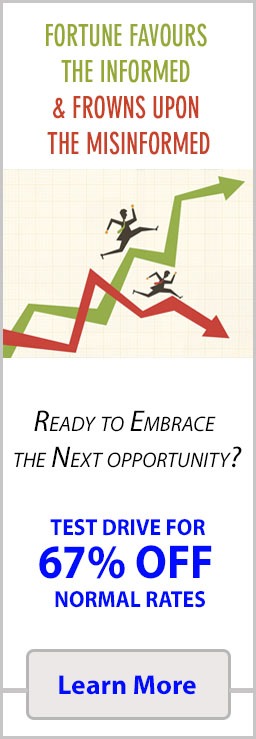
The Human Mind: Dark Psychology and Why It Matters Now
Updated Aug 26, 2025
The question sounds simple but cuts deep: what is dark psychology? It isn’t a pop‑culture buzzword or a trick reserved for shadowy operators. At its core, dark psychology examines the hidden levers—fear, desire, envy, status, power—that steer behavior beneath the polish of civility. Think of it as a backstage pass to our lesser impulses and, more unsettlingly, the forces that exploit them. In an era drowning in information but short on certainty, understanding these currents is not a luxury; it’s protection—and, used wisely, a compass.
Consider the everyday paradox: we trust but stay cautious; we cooperate yet compete; we build while quietly seeking advantage. The mind is a garden of blossoms and brambles. Most of us believe we’re immune to manipulation, that our choices are purely our own. Yet familiar mechanisms—gaslighting, persuasive framing, social proof, and the need to resolve cognitive dissonance—shape our narratives and nudge our decisions, often without our awareness.
The stakes have never been higher. Every click, like, and share is tracked, optimized, and monetized, turning influence into a 24/7 industry. Dark psychology isn’t confined to con artists or master manipulators; it is woven into campaign playbooks, marketing funnels, market sentiment, and personal relationships. To ignore it is to walk unarmored in a world of sharp elbows. Learning the patterns—how influence is built, where it crosses into coercion, and how to spot the tells—offers both a shield against exploitation and an ethical framework for how we influence others.
Patience, Pressure, and the Invisible Game
Peeling back the layers, one finds that dark psychology is less about overt coercion than about subtle, insidious pressure. It is the art of waiting for the right moment, of sensing when others are vulnerable, uncertain, or exhausted. Patience isn’t just a virtue here; it’s a weapon. One might think of Machiavelli, or of the slow-building tension in a psychological thriller—the sense that something is coming, but you do not know what.
This same dynamic of pressure and patience plays out in another arena: the financial markets. At first glance, markets appear to be driven by numbers, charts, and cold calculation. But beneath the ticker tape, they breathe with the same anxieties, biases, and ambitions that animate the human mind. The stock market is, after all, a marketplace of human emotion disguised as a system of rational exchange.
Take the notion of timing. In both dark psychology and investing, knowing when to act—and when to wait—is everything. The predator doesn’t lunge at the first sign of movement, nor does the shrewd investor buy or sell at the whim of the crowd. Both study the field, watch for weakness, and strike only when the odds are stacked in their favour. It’s a dance of anticipation, of reading signals that others miss.
Mirror Worlds: Where Psychology and Markets Intersect
Let’s thread together the patterns. There is, in essence, a set of behaviours and instincts that define both the dark corners of psychology and the wild, whipsaw world of financial markets. Some are obvious—like greed and fear. Others are subtler, more sophisticated. Consider these five points of intersection:
1. Manipulation and Market Sentiment
In dark psychology, manipulation is an art form—nudging people to act against their better judgment. In the market, sentiment is the invisible hand that moves billions of USD. When panic strikes, rational thought evaporates. The 2008 financial crisis is a haunting example: rumour, fear, and a few well-timed pronouncements triggered a selloff that wiped out trillions. The same patterns play out on smaller scales every day—pump-and-dump schemes, viral headlines, algorithmic triggers. The lesson? The crowd is often wrong, and those who understand the levers of sentiment can profit from its swings.
2. Cognitive Bias and Confirmation Loops
The human mind craves certainty. We look for patterns, even where none exist, and cling to beliefs that make us feel safe. This is the soil in which cognitive biases grow—confirmation bias, anchoring, loss aversion. In trading, these quirks manifest as “bagholding” losing stocks, chasing momentum, or doubling down on bad bets. The market is less a battleground of logic than a circus of recurring psychological traps. The wise investor, like the self-aware individual, learns to spot these loops and step outside them.
3. Adaptability—The Shape-Shifter’s Edge
Dark psychology isn’t about brute force; it’s about flexibility—adapting to the shape of another’s mind, changing approach as the situation demands. In financial markets, adaptability is the difference between survival and extinction. The best traders are not those who stick blindly to a system, but those who sense the changing mood—who know when a bull market has turned bear, or when a trend is about to reverse. This chameleon quality is what keeps both the manipulator and the investor alive.
4. Risk, Reward, and the Allure of the Abyss
Every act of manipulation, every trade, is a wager against the unknown. Dark psychology plays with risk—how much can be taken before the mask slips, before trust is broken? Markets are just as treacherous. The temptation of high returns lures many to the edge, but the abyss is always waiting. The collapse of Long-Term Capital Management in 1998, with its promise of mathematically guaranteed profits, is a lesson in hubris. Risk is not an enemy; it is the price of admission. But ignoring it—believing you are immune—is the surest way to disaster.
5. The Paradox of Control
Here lies the deepest irony. Both in psychology and in markets, the more you try to force an outcome, the more elusive it becomes. The manipulator who pushes too hard loses subtlety—and their victim’s trust. The trader who overtrades, who tries to bend the market to their will, soon faces ruin. Real power lies in letting go—in accepting uncertainty, in working with the flow rather than against it. This is not passivity, but a higher form of engagement, a paradox that both domains reward.
Beyond Survival: The Art of Mastery
Stepping back, one sees a larger pattern. The skills demanded by dark psychology—awareness, adaptability, emotional detachment—are not just tools of manipulation. They are the same qualities that underpin excellence in markets, in negotiation, in any field where uncertainty reigns. The difference is intent. The manipulator seeks advantage for its own sake. The master investor seeks understanding—of themselves, of the world, of the deep, hidden architecture of risk and reward.
To navigate both realms is to accept discomfort—not to flee from fear or uncertainty, but to use them as guides. The most successful investors are those who can sit with ambiguity, who do not flinch from chaos, who see opportunity where others see only danger. In this, the lessons of dark psychology are not a warning, but an invitation.
The Final Loop: Shadows and Light
So, what is dark psychology? It is the study of shadows—of the forces that shape us, sometimes against our will. But it is also the study of awareness, of shining a light into corners where others fear to look. In the world of finance, the greatest rewards go not to those who are fearless, but to those who understand the nature of fear itself.
Markets are not machines. They are living, breathing reflections of the human mind—its hopes, its lies, its capacity for self-deception and for greatness. To master one is to understand the other. The lesson is as old as myth: to face the darkness is not to be consumed by it, but to see more clearly. In the end, the real question is not what is dark psychology, but how we use that knowledge—to manipulate, or to master ourselves.
Timeless Wisdom: Articles for the Modern Thinker










